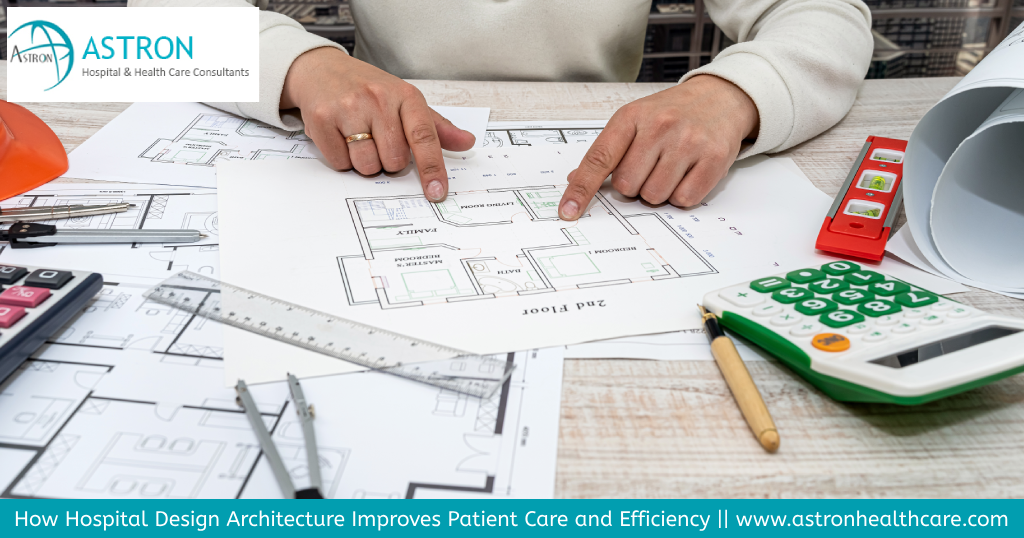
In the modern healthcare environment, which is characterized by fast changes, hospitals are supposed to have more than the treatment centers. They should become a comprehensive facility where care to patients is smooth, safety is put first, and processes are fast moving. Here the role of hospital design architecture gets accentuated. A well-designed hospital is not just another building that is supposed to look fancy, it enables a high level of technological equipment, keeps a positive flow, and makes working or being a patient very comfortable. Due to the emergence of smart hospitals, technology implementation in hospital design became inevitable.
The Role of Architecture in Smart Hospitals
A smart hospital is an institution that applies the technologies of the digital world and data-driven systems to enhance efficiencies in all spheres of healthcare delivery. Howbeit these tools cannot work alone, they must be accompanied by the appropriate infrastructure. This is why the architecture of hospitals is currently directed at the creation of smarter spaces that combine technology and location.
Whether it is where the beds of the patients should be located, where nurse stations should be designed, which operating rooms and how emergency departments should be designed; everything now has a purpose and that is to make it efficient and decrease the chances of medical errors. Sensors, automation systems, and digital controls are built into the design from the very beginning
Enhancing Patient Experience through Smart Design
Today a patient desires more than the medical care: he or she wants to be treated with comfort, privacy, and communication. The hospital design architecture takes such needs into account and combines them with intelligent technologies. i.e. the smart rooms may be able to automatically control lighting and temperature, or the patient can use a simple app to control them. Real-time medication schedule, doctor visitation, and test results can be shown on information panels in the rooms.
Digital maps and signage are capable of driving wayfinding systems in hospitals, so that patients and visitors can easily find their way in a very large hospital complex. Surroundings around waiting areas are made more open, less noisy and relaxed, decreasing stress and making hospital visits a bit less difficult.
Improving Operational Efficiency
Efficiency is critical in a hospital setting. Time saved can often mean lives saved. With the right hospital design architecture, hospitals can reduce delays, avoid bottlenecks, and optimize the use of resources. For instance, digital tracking systems can monitor equipment and staff movement, ensuring that critical tools are always available where needed.
In smart hospitals, workflows are streamlined through automation. Medication delivery systems, electronic medical records, and real-time patient monitoring are all integrated into the building’s design. This reduces the paperwork load on staff and allows them to focus more on patient care.
Infection Control and Safety
Infection control has always been a top priority, especially since the COVID-19 pandemic. Hospital design architecture now includes materials and layouts that help prevent the spread of disease. Touchless doors, hands-free faucets, and antimicrobial surfaces are standard in modern smart hospitals.
Air circulation and isolation room design are also optimized to contain airborne pathogens. With sensors monitoring air quality and temperature, hospitals can maintain healthy environments at all times. These safety-focused features ensure that hospitals are not only efficient but also protective spaces for everyone inside.
Sustainability in Modern Hospital Design
Technology is not only making hospitals smarter but also more sustainable. Hospital design architecture now includes energy-efficient lighting, water-saving systems, and environmentally responsible construction materials. Smart energy systems monitor and adjust power use throughout the hospital, reducing both environmental impact and operational costs.
Sustainable design doesn’t just help the planet—it also creates healthier spaces for patients and staff. Natural lighting, green spaces, and ventilation systems are all part of this approach, contributing to faster recovery and better well-being.
Conclusion
Smart hospitals represent the future of healthcare—and that future begins with thoughtful hospital design architecture. By combining technology with human-centered design, today’s hospitals can deliver better care, run more efficiently, and create safer, more welcoming spaces. As the healthcare industry continues to evolve, investing in smart, tech-ready design will be essential for hospitals that want to meet modern demands and improve outcomes for all.
